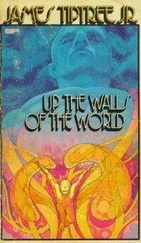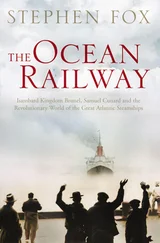While I was initially hesitant about approaching him on the subject, he seemed to welcome the project with enthusiasm, especially when I told him that I had decided to spend a month exclusively searching out the artist. He did his best to encourage my optimism, and somewhat gingerly admitted that he had given up the search long ago. “This is not to say that I'm not curious, as I am sure quite a number of people are. I guess I just don't feel that one needs to know an artist personally to appreciate his or her work.” I asked Sean over the phone if, at the very least, he felt it would better his understanding of the art. “Yes, I suppose every piece is an extension of an artist's personality, but Coprolalia clearly doesn't want to be found. His acquaintance is not something I anticipate, nor is it something that I feel I need to seek out anymore. To me, it's kind of a poot moint…I mean moot point,” he added with a laugh. “Poot Moint is a great act if you ever get the chance to see them.”
He invited me to his apartment in order to pick up a “rudimentary list” of Coprolalia's known installations, which, he joked, could also pass as a local's guide to the dive bar scene in the city. “Some artists want their work up in the museum; Coprolalia, however, wants to share his genius through a more plebeian medium. The Mars Bar is his Louvre.”
Sean had always been a fairly popular teacher, even if he was prone to prolonged fits of pontification and the occasional stubbornness. Perhaps all professors are guilty of these things from time to time, no matter how conscientious or composed they seem to be. Then again, neither of these attributes ever applied to Sean. There was a certain energy to him that one rarely finds in a university-level teacher. Even in class he was regarded as something of an anomaly when compared to the more strigine of his associates, those who are oblivious to the world around them and hopelessly lost in the labyrinths of an arcane liturgy no more applicable to modern life than a horse is to modern warfare. Instead of that aggressive desire to make people look stupid or simply uninformed, Sean actually listened to his students — he digested every word uttered within his classroom, and responded accordingly. You felt as though he was taking away as much from the discussion as you were, which, consequently, afforded him a level of respect that resonated with even the most combative and wayward students.
I'm not in his apartment more than ten seconds before he begins talking about the artist. His mannerisms become increasingly frenzied, akin to those of a child recounting the plot of a favorite cartoon — giddy, quick, erratic. After an almost ecstatic soliloquy that lasts roughly fifteen minutes, he directs me to the couch. “I don't want to bore you with what I think about him,” he jokes; “I'm sure you want to see his work for yourself.” He begins in the direction of a hallway. “There's nothing quite like seeing one in person, but I do think it's important to show you just what you're in for.” I ask where the pieces are typically featured, which prompts an incredulous laugh from the other room. “Are you kidding?”
“Besides the obvious. Are there any facilities…institutions, rather, that have managed to get their hands on anything more substantial than a photograph?”
“No,” his muffled voice responds. “The places he goes to aren't exactly friendly to the artistic community. They don't even want to keep the pieces up half the time. Just about the entire corpus from the nineties has been erased, especially in the more gentrified regions of the City. I've managed to either photograph or acquire a photograph of a lot of his work that's appeared over the past decade or so, but there's still a pretty big hole in that collection. Not to sound too conceited, but if I don't have at the very least a replica of a photograph, no one does — unless, of course, it's one of the newer pieces.”
“That's got to piss you off some.”
“No, I don't really blame the people who own these places,” he responds as a resonating crash rattles the apartment. This is followed by a series of curses, perhaps the type that one comes to expect just before someone demands an umpire or referee get off his knees. Sean is then silent for several moments. “Sorry. What was I saying?” He pauses. “Oh, yes: I understand where the owners are coming from. If they feel it stifles business because it creates an atmosphere of depravity or because it invites vandalism or whatever, then they have every right to get rid of it. Sure, I don't agree with it, but, as business owners, it's their prerogative.” I am standing in the doorway of his office, which appears to have recently been renovated by a cyclone. Two freshly broken pieces of plywood are still swinging along the wall like pinball flippers; a chagrined Sean is squatting over a heap of papers and Polaroids and binders that he is still in the process of sculpting into a potato mound. He senses my presence and turns to greet me with the glare of a raccoon caught ravaging the garbage. “I just try to document everything that I can.” He rises. I turn my attention away from him, take note that the apartment is a two-bedroom, and begin to examine the walls in the small hallway that separates the office, bedroom, and bathroom from the kitchen, living room, and the table covered with mail, which, if cleaned, could seat two for dinner.
The office is not the only space dominated by the presence of Coprolalia. His entire apartment is littered with photographs of bar bathrooms from throughout the city. It summons the image of a detective poring over the details of a series of related crime scenes, though there are no corpses involved, and rarely any blood (also, that quintessential overhead fan is missing; Sean's place has A/C). Some of the photographs are tacked to the wall; his favorites are in frames. The majority, however, he stores in large albums. Their covers, once home to phrases such as “Loving Memories” or “Priceless Moments,” do not offer these kitschy descriptions any longer; they have been relabeled by duct tape and a black Sharpie. His titles are prosaic—“Brooklyn '00, “Queens '01”—and most of the ink has been pilfered by sweaty hands, spills, and time. Some of the more recent pictures lay on his coffee table next to two ashtrays overflowing with cigarette ends, a few stray coffee cups and dirty plates, and the jewel case to an Iggy Pop album. “The Passenger” quietly pulses on the stereo as he drops seven or eight albums of photographs on the table. He has a look of mild disappointment on his face. “I can't find it,” he says.
“What?”
“I wanted to show you Vis Inertiae , but I must have left it in my office.” He notices a look. “My other office.”
I ask him about the piece, Vis Inertiae . I've heard of it before, and I can remember a Cooper Union student's ecstatic and vague description of it. We were at some bar on Saint Marx, one of those places to which suburban punks still pay their homage, though most of the street urchins and fringe-straddlers who made it (in)famous in decades past were evicted relatively soon after Giuliani marched on Tompkins in what many consider to be sort of a '68 Prague redux . Our interaction did not last long. The young artist lost interest in continuing the conversation once he recognized my ignorance on the subject of Coprolalia. He was neither arrogant nor rude; he simply realized that there wasn't a real need to branch off into a new topic of discourse as each of us had our respective parties to whom we would return without the feeling that there was anything left unsaid between us.
“It's an elephant flexing its muscle,” Sean says of the piece. “The words 'Vis Inertiae'—or, the power of inertia — are inscribed beneath.” He brandishes a brief, coy smile. “Nice little play on words, don't you think?”
Читать дальше










